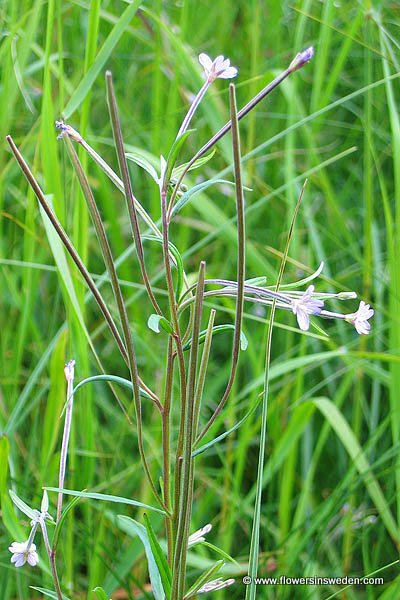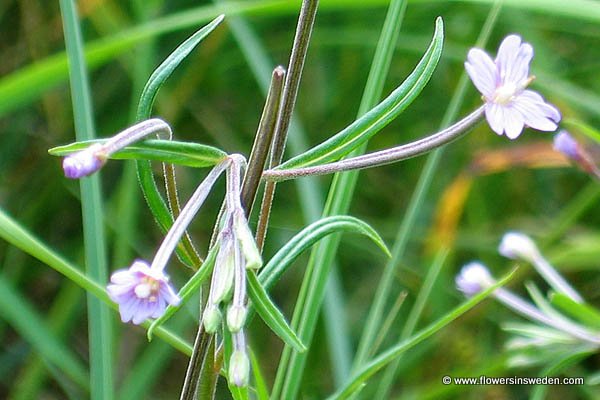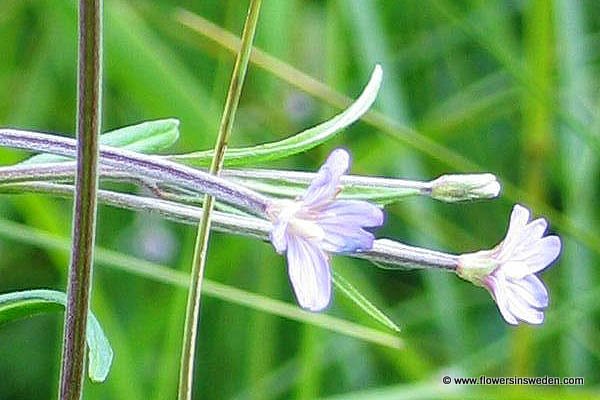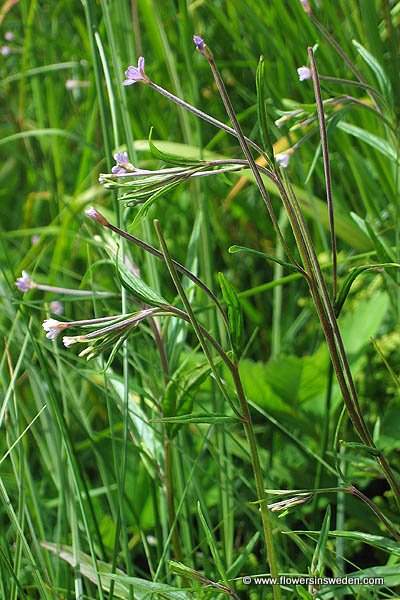|
|
| Life form: |
| Hairy perennial, dicot |
| Stems: |
| Spindly stems with leaves; flowering stems pubescent; end of stem droops once past the bud stage |
| Leaves: |
| Two to seven centimeters long, widely-spaced oval to linear leaves |
| Flowers: |
| 4 green sepals; 4 white or pink lanceolate, slightly lobed or undulating petals, 8 stamens Hairy inflorescences of small white or pink four-petals flowers |
| Flowering Period: |
| July, August |
| Fruits: |
| Hairy capsule 3 to 9 centimeters long |
| Habitat: |
| Fresh water, bogs, marshes, pastureland, meadows |

Derivation of the botanical name:
Epilolobium derived from epi, "on top of," indicating that the other flower parts are on top of the lobium, the "pod" or "fruit."
palustre, "in bogs".
- The standard author abbreviation L. is used to indicate Carl Linnaeus (1707 – 1778), a Swedish botanist, physician, and zoologist, the father of modern taxonomy.


|




